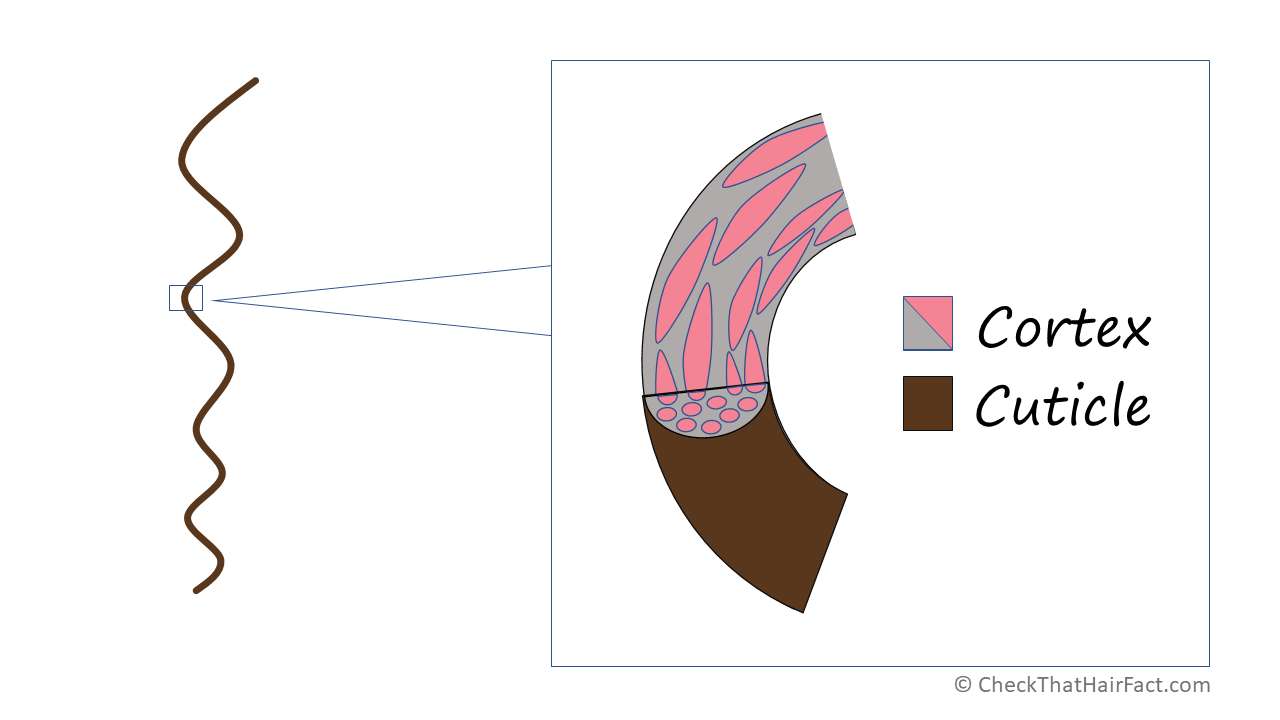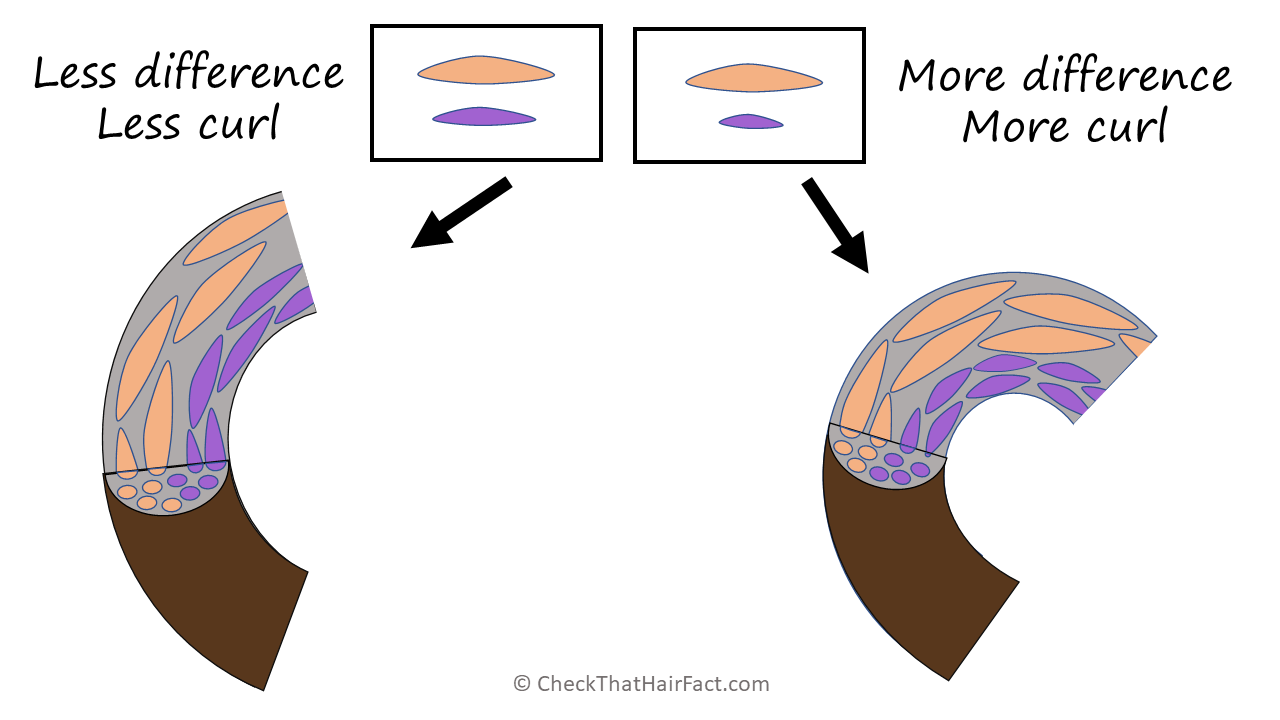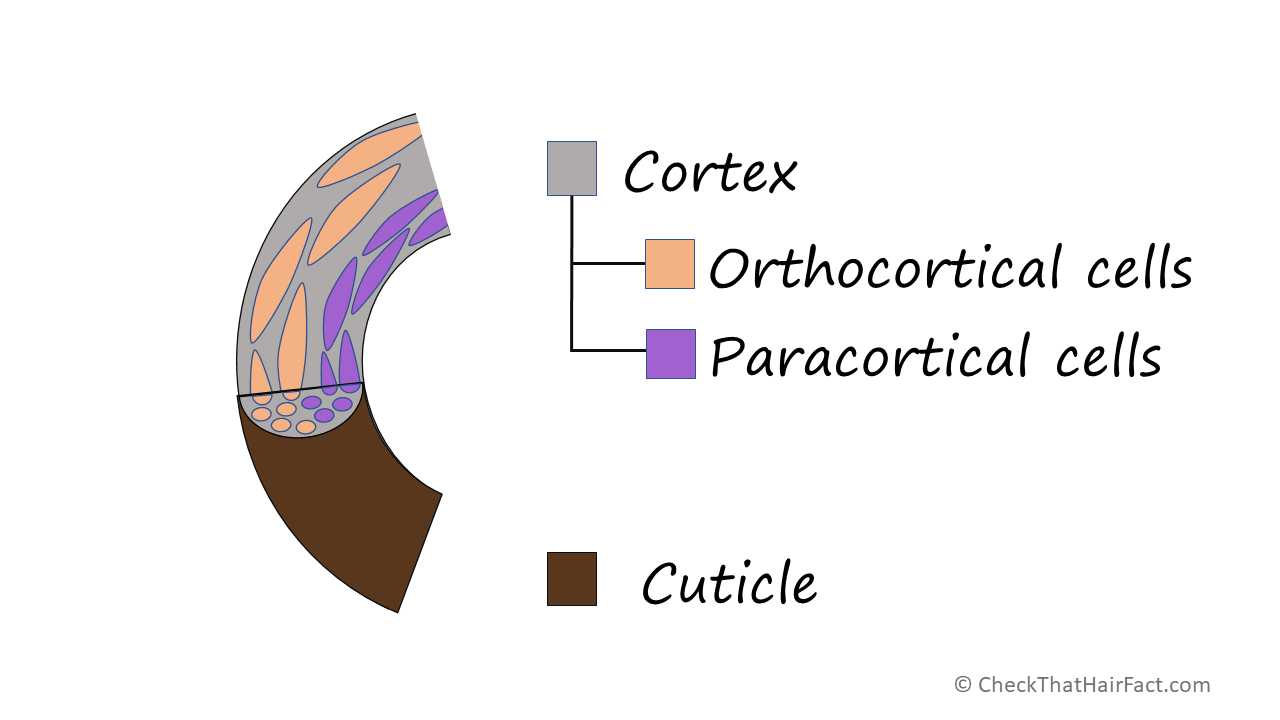Let’s jump right into the latest scientific findings surrounding the nature of curly hair!
The hair cortex is made of cortical cells

The diagram above shows the pink cortical cells held together by the cellular matrix complex (CMC), which is essentially a natural glue made of lipids and proteins. Cortical cells are very long and skinny (the diagram makes them look shorter for the sake of easier concept explaining). Cortical cells run parallel to the hair fiber, and give the hair fiber it’s mechanical strength. When you wrap a hair fiber around two fingers and pull it gently, you will feel it stretch: what you’re feeling is the keratin within the cortical cells stretching.
Two of the cortical cell types are responsible for curliness
There are multiple different types of cortical cells, but scientists have found that the orthocortical and paracortical cells are associated with differences in curliness. The latest evidence [1] points to a very specific relationship between the orthocortical and paracortical cells, which we will get into next:
Hair fibers curl because adjacent cells in the cortex have different lengths.

The shorter the paracortical cells are (compared to their adjacent orthocortical cells), the tighter the radius becomes. A good analogy to a curl is a marching band that is turning. How does a marching band turn? It turns because the people on the inside of the turn make shorter steps compared to the people on the outside. In the same way, the paracortical cells have smaller lengths on the inside of the curl compared to the orthocortical cells on the outside.
The fact that the ratio changes along the length of the hair strand also explains how hair strands can have multiple changes in the direction and tightness of curl as you go down the length.
Thanks for reading, and stay tuned!
Reference:

